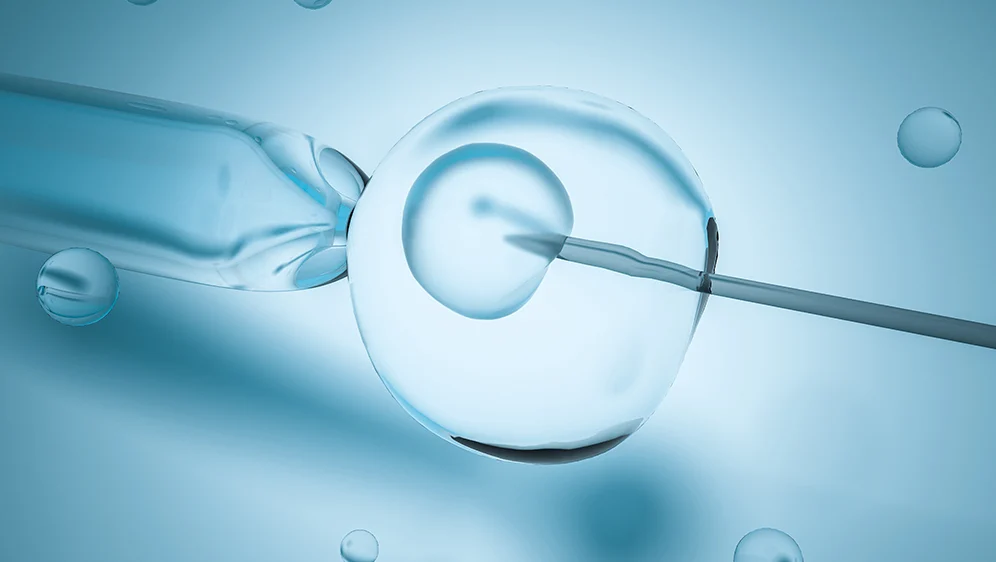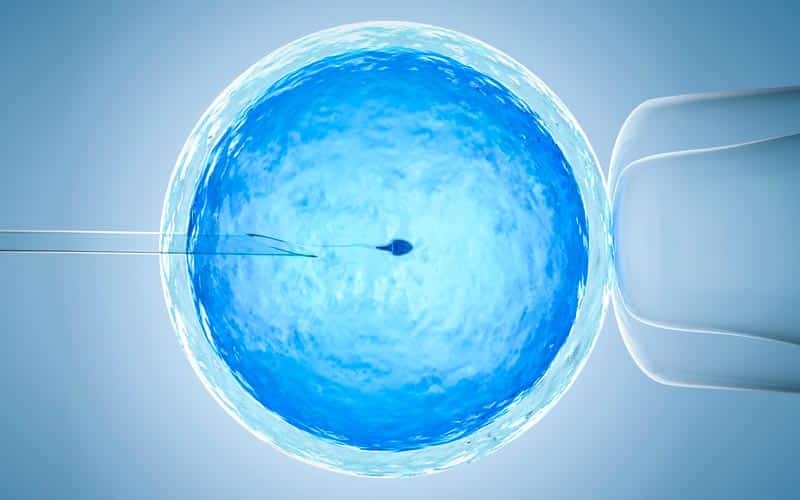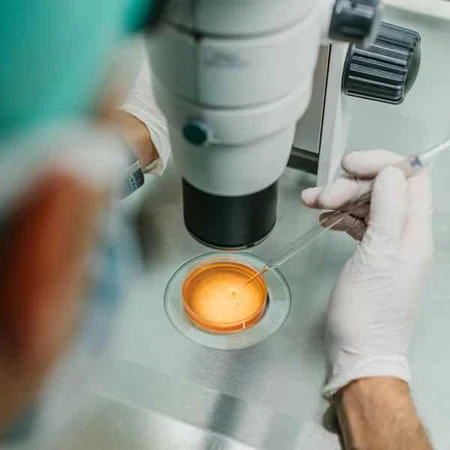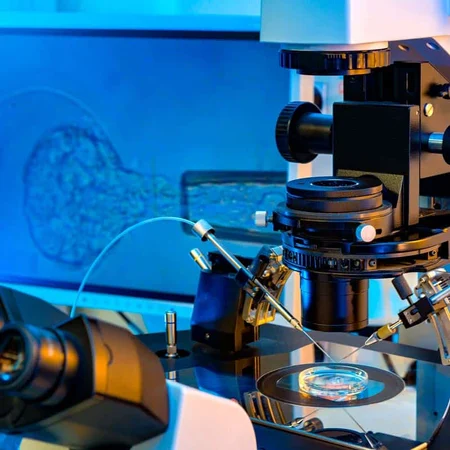
Assisted reproduction
In vitro fertilisation (IVF) + Genetics (PGT-A)
IVF + Genetics is the perfect combination to increase your chances of becoming pregnant, reduce your risk of miscarriage and improve your chances of having a healthy child with no chromosomal disorders.
What is IVF + Genetics?
Our IVF + Genetics programme is a treatment that combines the use of two techniques:
A. In vitro fertilisation (IVF) This is the most sophisticated technique in assisted reproduction. It involves the fertilisation of a woman’s oocytes in the lab, using her partner’s spermatozoa or sperm from a donor. The embryos obtained from this laboratory fertilisation and cultivation are then transferred to the patient’s uterus when it is ready to receive them.
IVF is the technique which requires the most experience and technology in an assisted reproduction clinic. Ginefiv is a pioneer in treating sterility and infertility in Spain using this technique. During its more than 35 years of history, our clinic has helped thousands of women every year become pregnant.
B. Pre-implantation Genetic Testing for Aneuploidy (PGT-A) This genetic testing technique enables the detection of anomalies in the number of chromosomes (a condition called aneuploidy) in the embryos before they are transferred to the uterus.

Why include a genetic screening?
Normally, each cell in the human body contains 23 pairs of chromosomes, with half of these coming from the mother and the other half from the father. But sometimes, this number of chromosomes is anomalous, giving rise to what is known as chromosomal aneuploidy.
When this occurs and the number of chromosomes is incorrect, implantation failures may occur along with complications in embryo development or in the pregnancy itself. Some of the most well-known cases of aneuploidy are Down syndrome, Turner syndrome and Klinefelter syndrome.
By including genetic testing in the IVF cycle, we can detect chromosomal problems in the embryo before its transfer to the woman’s uterus, thus reducing the risk of miscarriage and increasing the probability of having a healthy child.

Advantages over conventional IVF
- It increases the success rate of embryo implantation.
- It reduces the time until pregnancy occurs.
- It reduces the risk of miscarriage.
- It increases the chance of having a healthy baby.
- It reduces the probability of having to go through various assisted reproduction cycles.
What else do you need to know about IVF + Genetics?
If necessary, patients can make use of Ginefiv’s sperm donor bank.
This programme provides excellent results, enabling us to achieve higher pregnancy rates than those of conventional IVF. The rate also depends on age, however, and our medical team will inform you of your possibilities after assessing your case.
The phases of IVF + Genetics
The IVF + Genetics treatment consists of five phases:

Phase 1
Ovarian stimulation
We stimulate your ovaries in order to obtain a certain number of eggs to maximise the probability of pregnancy. Ultrasound guidance is fundamental during this phase.
Phase 2
Egg retrieval
At the right time, we gather the eggs prepared in the previous phase, using a procedure called egg retrieval.
You should know:
The traceability of the gametes and embryos: we have an electronic system (IVF Patrol) for tracking and controlling all biological samples (gametes and embryos), which prevents errors in the handling of these samples. From the moment of the retrieval, all movements are traced electronically.

IVF PATROL
This system guarantees a constant control of the samples, thereby avoiding any incidents in the identification of gametes and embryos. IVF Patrol uses a radiofrequency system to provide traceability throughout the treatment, allowing us to offer an extraordinary guarantee of safety.
Phase 3
Fertilisation and culture
The obtained eggs are fertilised and cultivated in our lab until they reach the
blastocyst stage. You should know:
- Ginefiv is equipped with all the most recent advances in assisted reproductive technology.
- Thanks to time-lapse technology, we have the option of monitoring the embryos in real time.
Phase 4
PGT – A
In pre-implantation genetic testing, a small number of cells are extracted (biopsy) from the best quality embryos which have reached the blastocyst stage and the embryos are then cryopreserved while awaiting the test results.
The biopsied cells then undergo PGT-A, a technique which allows us to confirm that the number of chromosomes in the embryos is correct. Based on the results of the PGT-A, we will know whether the embryo is chromosomally normal (euploid) and can therefore be unfrozen and transferred to the uterus.


Phase 5
Embryo transfer
The selected embryos will be transferred on the day which is most suitable to you. The remaining chromosomally normal embryos are preserved in the latest generation sperm banks that are designed to avoid cross-contamination.The cost of the treatment covers the first two years of this storage.









